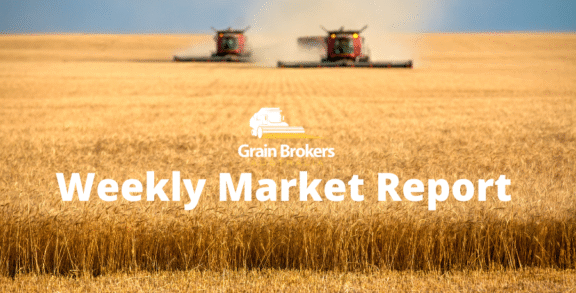
Corn production in China hit a record this year, up four per cent compared to 2022, according to the National Bureau of Statistics (NBS). An increase in the planted and harvested areas compared to the previous season more than compensated for the damage and production losses caused by summer typhoons in some northern provinces.
Output in the world’s second-largest producer rose from 277.2 million metric tonne in 2022 to 288.8MMT this year, significantly higher than the 277MMT forecast from the USDA in this month’s World Agricultural Supply and Demand Estimates.
NBS advised that the area planted to corn this year rose 2.7 per cent, or 1.15 million hectares, compared to a year earlier to 44.2 million hectares, the largest area sown to corn since at least 2015. This is significantly higher than the 43.3 million hectare planted area reported by the USDA’s Foreign Agricultural Service.
The corn area has been boosted in recent years by government subsidies provided to Chinese farmers to encourage the planting of staple grains. The subsidies are part of a concerted push by Beijing to improve the nation’s food security by increasing domestic grain production.
China’s soybean harvest also grew this year, up 2.8 per cent to 20.8MMT. This was off a planted area of 10.5 million hectares, 2.2 per cent higher year-on-year. However, rice and wheat production both fell in 2023, down 0.9 and 0.8 per cent, respectively, to 206.6MMT and 136.6MMT, the NBS reported.
According to agricultural analyst Beijing Orient Agribusiness Consultancy, the government has been gradually bringing uncultivated and underutilised land in the country’s northernmost provinces of Xinjiang, Inner Mongolia and Heilongjiang into the grain production system as part of Beijing’s food security drive.
The development of this new land for cultivation saw the total area planted to grain crops in 2023 increase by 636,000 hectares, or 0.5 per cent, to 119 million hectares, according to NBS. The increased area saw the world’s biggest producer and consumer of grain push total production to a new record of 695.4MMT, marking a 1.3 per cent increase on last year. China’s grain output has climbed significantly over the past two decades and has remained above 650MMT since 2015.
Productivity averaged 5.85 metric tonne for each planted hectare across the nation in 2023, which is 0.8 per cent higher than that of last year. The increased output came despite some regions being hit by a string of heatwaves and torrential rain over the summer, which disrupted food production and destroyed entire harvests in some areas. These included a prolonged rain spell during the winter crop harvest in regions along the Yellow River and Huaihe River, floods in northern and northeastern regions, and drought in northwestern areas.
Figures from China’s Ministry of Agriculture and Rural Affairs revealed that in 2023, a total of 9.6 million hectares of grain crops were affected by typhoons, drought, floods, frost and heatwaves. Interestingly, this was 1.9 million hectares less than in 2022 and 7.2 million hectares below the five-year average. Drought-affected crops made up 30 per cent of all disaster-affected farmland this year, lower than the long-term average of 42 per cent.
Heilongjiang province in northeast China is widely known as the country’s “grain barn.” Production this year reached 77.9MMT, accounting for 11.2 per cent of the country’s total. Heilongjiang’s reliable weather and cropping systems have seen it ranked first in the country for 14 consecutive years, with a growth in output in 2023 of 252,000 metric tonne compared to last year.
The province’s grain production area was 14.74 million hectares, accounting for 12.4 per cent of the country’s total cultivated lands. Flooding affected some summer crops, but the affected area was relatively small, thus limiting the damage to final production according to the provincial department of agriculture and rural affairs.
The autonomous region Xinjiang Uygur, which traditionally contributes to the bulk of China’s cotton production but not food due to a lack of water, saw a growth of over 16 per cent in terms of both planted area and output in 2023 compared with last year. The increase in production was mainly driven by improved moisture conservation farming techniques. Expanding agricultural production in the region is a critical ingredient in Beijing’s food security ambitions as long as further improvements in water use efficiency can be achieved.
Meanwhile, the increase in domestic corn supply, coupled with the extremely robust import program, has reportedly pushed the nearby market into oversupply and driven domestic prices lower, much to the delight of the country’s intensive livestock industry. China is home to the world’s biggest pig herd and producers have been suffering under the burden of negative margins for some time on the back of elevated domestic stockfeed prices.
Since trading at an intraday high of 2,692 yuan (AUD568 per metric tonne) on August 11, the January corn futures contract on the Dalian Commodity Exchange has fallen 9 per cent in value to close last week at 2,450 yuan (AUD517/MT), a value not seen since May of this year. Over half of that fall has occurred since November 11, as the harvest wound up and the crop size became apparent.
Based on the pace of imports since July 1 and unexecuted 2023/24 season purchases already on the books, Beijing seems intent on continuing the corn supply build to keep domestic prices in check and replenish state reserves. While the USDA held its ground in this month’s WASDE, leaving Chinese corn imports unchanged at 23MMT this season, some market pundits are north of 30MMT, suggesting even more demand will surface in the first quarter of 2024.
Call your local Grain Brokers Australia representative on 1300 946 544 to discuss your grain marketing needs.





